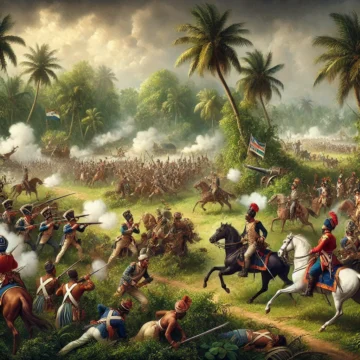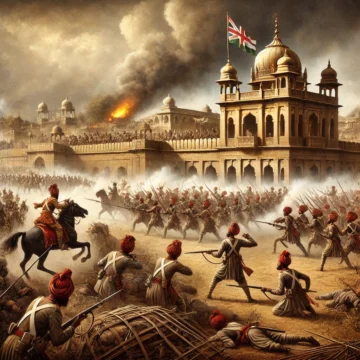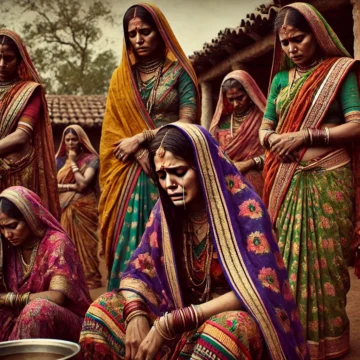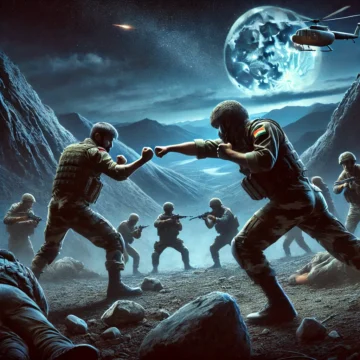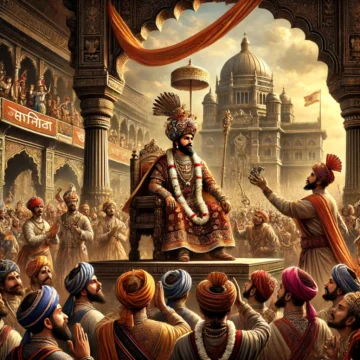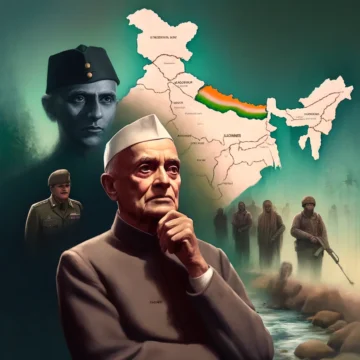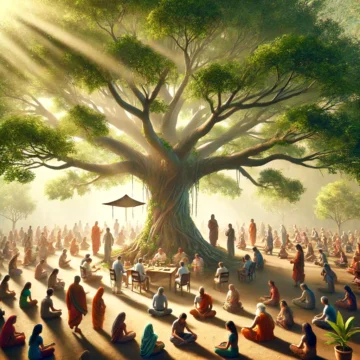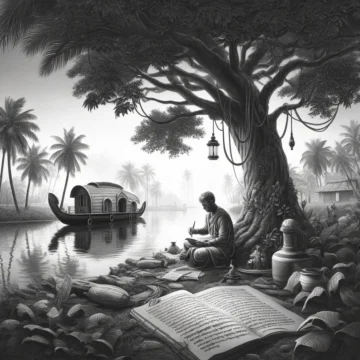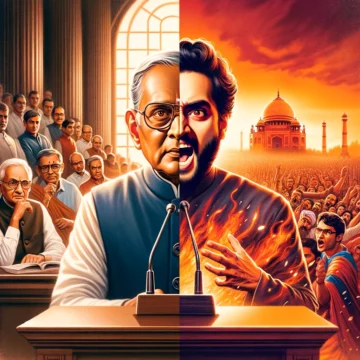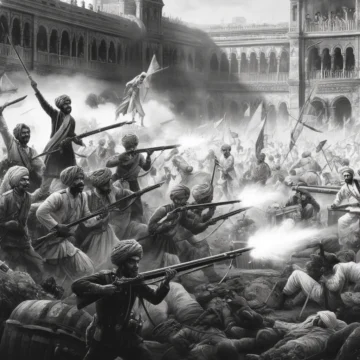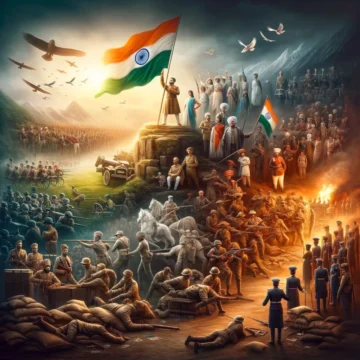In the "Importance of the Day" series, we delve into the Battle of Plassey, a crucial event in 1757 that reshaped Indian history. The battle's strategic orchestration led to the British dominance in India, influenced by key defections like that of Mir Jafar.
Revolt 1857: Kanpur Seize and Satichaura Ghat Massacre
Welcome to HinduInfoPedia.org as we revisit the Siege and Massacre of Cawnpore during the 1857 Revolt. This week, we delve into these pivotal events that marked significant shifts in the First War of Indian Independence, deeply influencing anti-colonial sentiments and shaping the resistance against British rule. Join us as we explore the impact and legacy of these historical upheavals.
Importance of the Day: Significant Events of 26th Week 2024
Join us this Tuesday on HinduInfoPedia.org as we delve into the 'Importance of the Day,' exploring significant events in Indian history from the tragic Air India bombing to the Siege of Cawnpore. We uncover the enduring impact these events have had on India's socio-political landscape.
India China Border: Correlating Doklam Standoff And Dharma
This blog post explores the Doklam Standoff at the India-China border, a pivotal conflict that tested India's geopolitical strategies and ethical doctrines rooted in Dharma. The standoff, illustrating deep-rooted border disputes and China's 'salami-slicing' tactics, brings to light the vital lessons in maintaining territorial integrity and strategic diplomacy.
Jammu and Kashmir: Massacre at Chapnari
The haunting valleys of Kashmir, where global jihad has intensified local conflicts, revealing a complex history marked by political maneuvers and territorial disputes since the 1947 partition. This essay explores how global jihadist movements have woven into the local fabric, complicating peace efforts.
Education System in India: Tracing the Roots of Western Education
Explore the evolution of India's oldest educational institutions from St. Paul’s College in 1542 to modern universities. This blog delves into their profound impact on India's socio-economic landscape, highlighting pivotal roles in shaping policies and driving social reforms through education.
India China Border: The Galwan Clash Impact
Explore the intense confrontation at the India China border in Galwan Valley on June 16, 2020, which resulted in significant casualties. This blog delves into the strategic implications of the clash, revealing how it reshaped military and diplomatic relations between India and China and highlighting the ongoing tensions along the disputed frontier.
Rani Lakshmi Bai: The Steel Woman of India
Explore the life of Rani Lakshmi Bai, the Rani of Jhansi, who became a symbol of resistance against British colonial rule. Her leadership during the Indian Rebellion of 1857, marked by valiant battles and strategic brilliance, has immortalized her as an enduring icon of courage and the fight for independence in the face of overwhelming odds.
Nana Saheb: A Crucial Figure in 1857 Rebellion
Nana Saheb, born Dhondu Pant on May 19, 1824, was a pivotal leader in the Indian Rebellion of 1857. Raised in Bithur near Kanpur, he opposed British policies, particularly the Doctrine of Lapse, which denied him his pension and estate. His leadership included the capture and siege of Kanpur and alliances with Tatya Tope and Rani Lakshmi Bai. Despite Kanpur's fall and his retreat to Nepal, Nana Saheb remains a symbol of resistance against British rule. His legacy is commemorated through cultural references, memorials, and educational curricula in contemporary India.
Chhatrapati Shivaji Maharaj Coronated: Rise of Nationalist Icon
Delve into the significant coronation of Chhatrapati Shivaji Maharaj, a landmark event heralding Hindu nationalism against Mughal oppression. This historic ceremony, steeped in rich rituals and symbolism, marks a major turning point in the Maratha Empire's history, illustrating Shivaji's profound impact on Indian heritage and his enduring legacy as a Hindu nationalist icon
Maratha Confederacy and Third Anglo-Maratha War
Delve into the Third Anglo-Maratha War's profound impact as it signified the end of the Maratha Confederacy and ushered in British dominance. This pivotal conflict reshaped India's political terrain, extinguishing the era of Maratha power and setting the stage for British colonial rule, fundamentally altering the nation's history and governance.
Guru Purnima: Celebrating the Revered Teacher-Student Tradition
Explore the rich traditions of Guru Purnima, a festival honoring the sacred Guru Shishya Parampara through rituals like Puja, Satsang, and Meditation. This day marks a pivotal moment for introspection and renewal, celebrating the enduring wisdom of Gurus across generations.
Jawaharlal Nehru: Continued British Raj Legacy Post-Independence
Explore the lesser-known aspects of Jawaharlal Nehru's leadership, focusing on the controversial policies and administrative decisions that have shaped modern India. This critical analysis delves into the complexities of his tenure, examining the enduring impacts on India's political landscape, and highlighting the debates that continue to surround his legacy in shaping a post-colonial nation.
Sanatana Dharma: Secular and Inclusive Values of Hindu Philosophy
Explore the profound teachings of Sanatana Dharma, which emphasize inclusivity and collective well-being through ancient scriptures. This blog delves into how these principles of Hindu philosophy resonate with modern societal challenges, fostering peace and unity across diverse communities under the symbolic shelter of an ancient, all-encompassing tree.
Maharana Pratap: History Unveiled
Explore the life of Maharana Pratap, a symbol of Rajput valor and resistance against Mughal dominance. Born on May 9, 1540, in Kumbhalgarh, Rajasthan, Pratap's legacy as the fierce protector of Mewar resonates through Indian history. His unwavering commitment to the sovereignty of Mewar is celebrated in numerous memorials, and his tactics in guerrilla warfare are studied for their brilliance. His legendary battle at Haldighati in 1576 against the Mughals marked a significant point in his reign, showcasing his strategic prowess and enduring spirit. This essay delves deep into his battles, governance, and the indelible mark he left on Rajputana and beyond
Malayalam Poets and Vyloppilli Sreedhara Menon
Vyloppilli Sreedhara Menon's poetry captures the essence of Kerala's cultural and natural landscapes. His works like "Mampazham" and "Kaipavallari" not only reflect the social issues of his time but also resonate deeply with the emotions and experiences of the common man. Through his mastery in blending classical Malayalam poetic forms with modernist themes, Menon created a unique voice that remains influential in Malayalam literature today. His contributions highlight a delicate balance of tradition and modernity, making his literary achievements a cornerstone of Malayalam poetry.
Mughal Empire History and Jahandar Shah
Jahandar Shah's brief tenure as emperor from 1712 to 1713 marked a crucial phase in the Mughal Empire's history, highlighting the challenges of governance and stability within a fracturing dynasty. As the eldest son of Bahadur Shah I, his rise to power was paved with a bloody succession war, underscoring the empire's internal strife. His reign, though short, was significant, characterized by his reliance on the influential noble Zulfiqar Khan, whose policies aimed to stabilize the empire's finances but ultimately failed to halt its decline. This period illustrates the complexities of leadership and the pivotal role it plays in the sustenance or deterioration of a great empire. Jahandar Shah's story is a testament to the volatile dynamics of Mughal politics and a reminder of how quickly fortunes can turn in the corridors of power.
Indian Freedom Fighters: Legacy of Gopal Krishna Gokhale
As one of the prominent Indian freedom fighters, Gopal Krishna Gokhale played a pivotal role in the early years of India's struggle against British colonial rule. Born on May 9, 1866, in Ratnagiri, Maharashtra, Gokhale's contributions as a senior leader of the Indian National Congress and a distinguished social reformer were significant. His diplomatic skills and steadfast principles led him to the presidency of the Congress in 1905, advocating for self-rule through gradual and constitutional reforms. Gokhale’s commitment to moderate nationalism and his focus on elevating the Indian elite's status underscored his strategic approach to engaging with colonial authorities through dialogue and legislative advocacy. His founding of the Servants of India Society aimed to prepare the nation for self-governance by educating and reforming society from within, further cementing his legacy as a reformer. The juxtaposition of Gokhale’s philosophies with those of Bal Gangadhar Tilak offers profound insight into the diverse strategies that shaped the struggle of Indian freedom fighters, highlighting the complex interplay between moderate reform and radical activism in their quest for self-rule.
Indian Independence and Mutiny in India 1857
The mutiny in India in 1857, recognized as the First War of Indian Independence, marked a significant point in history. This upheaval began in Meerut, fueled by the British imposition of the Enfield P-53 rifle cartridges, rumored to be greased with cow and pig fat, offending both Hindu and Muslim soldiers. The rebellion quickly escalated when 85 sepoys, punished for their refusal to use these cartridges, sparked widespread mutiny. Liberating their comrades and killing their British officers, they advanced towards Delhi, declaring the Mughal emperor as their leader and catalyzing other regions to join the resistance. This event not only challenged colonial rule but also united diverse sections of Indian society in a fight for sovereignty, laying foundational principles for future struggles for freedom.
Indian Rebellion of 1857: Key Battles and Heroes
The Indian Rebellion of 1857, a seminal event in the annals of Indian history, marked the first major challenge to British colonial rule. This uprising, often referred to as the Sepoy Rebellion, ignited across various parts of India due to the oppressive policies implemented by the British East India Company. The rebellion was fueled by widespread dissatisfaction stemming from economic exploitation, cultural insensitivity, and controversial military practices. The event is remembered not just for its immediate impact, but for igniting a nationalistic fervor that eventually paved the way for India's independence movement. Through detailed accounts of battles, personal sacrifices, and the unyielding spirit of the Indian populace, this essay explores the complex dynamics and significant figures that shaped the 1857 uprising, revealing the deep-rooted resistance against British rule and the quest for freedom.


